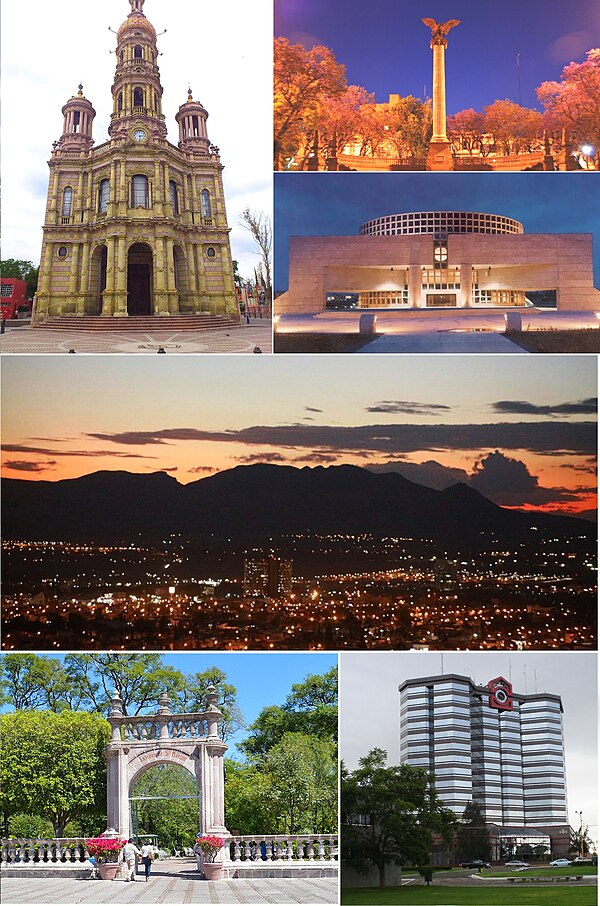Aguascalientes City
capital of the Mexican state of Aguascalientes From Wikipedia, the free encyclopedia
Remove ads
Aguascalientes (Spanish pronunciation: [ˌaɣwaskaˈljentes] (![]() listen)) is the capital of the state of Aguascalientes. It is its biggest city. One million people live in the Metropolitan area.[1] It is in North-Central Mexico. It is part of the macroregion of Bajío,[2] which is among the safest and richest regions in Mexico. It was part of the kingdom of Nueva Galicia. In 1835 Aguascalientes became the capital of the Free and Sovereign State of Aguascalientes.[3] Aguascalientes has been called the cleanest city in Latin America.[4] The people in Aguascalientes include Japanese, Koreans, and Germans.
listen)) is the capital of the state of Aguascalientes. It is its biggest city. One million people live in the Metropolitan area.[1] It is in North-Central Mexico. It is part of the macroregion of Bajío,[2] which is among the safest and richest regions in Mexico. It was part of the kingdom of Nueva Galicia. In 1835 Aguascalientes became the capital of the Free and Sovereign State of Aguascalientes.[3] Aguascalientes has been called the cleanest city in Latin America.[4] The people in Aguascalientes include Japanese, Koreans, and Germans.
It is on the banks of the Aguascalientes river, 1880 meters above sea level, at 21°51′N 102°18′W. It is the municipal seat for the Aguascalientes Municipality. The Aguascalientes metropolitan area includes the municipality of Jesús María and San Francisco de los Romo. It was a Chichimeca Indian territory. It later blossomed as a strategic link between Mexico City and the mines of Zacatecas, while prosperous agriculture and ranching helped feed Spain's emerging New World cities.[5]
OECD has said that Aguascalientes has a good business climate.[6] It is a strong business and economic center in the Bajío region.[7] Its strategic location and infrastructure have made it a regional hub and a place for international headquarters.[7] Two of Nissan's largest and most important manufacturing plants in Latin America are in the city. Other important companies located in Aguascalientes include Jatco, Coca-Cola, Flextronics, Texas Instruments, Donaldson, and Calsonic Kansei.
Because of its services and hotel industry, Aguascalientes is one of the most important centers in Mexico for entertainment, gastronomy, leisure activities, arts and recreation.[8]
Remove ads
Culture
In the city, two official parades are held: one, on the occasion of Independence Day, on the morning of September 16, and another on the occasion of the celebration of the beginning of the Mexican Revolution on the morning of November 20, as in any other square in the country, but it also has two other local parades: one on the occasion of the celebration of the National Fair of San Marcos, on the morning of April 25 (San Marcos day), called the spring parade, and another on the evening of November 1, on the occasion of the Cultural Festival of Calaveras.
Remove ads
References
Wikiwand - on
Seamless Wikipedia browsing. On steroids.
Remove ads




